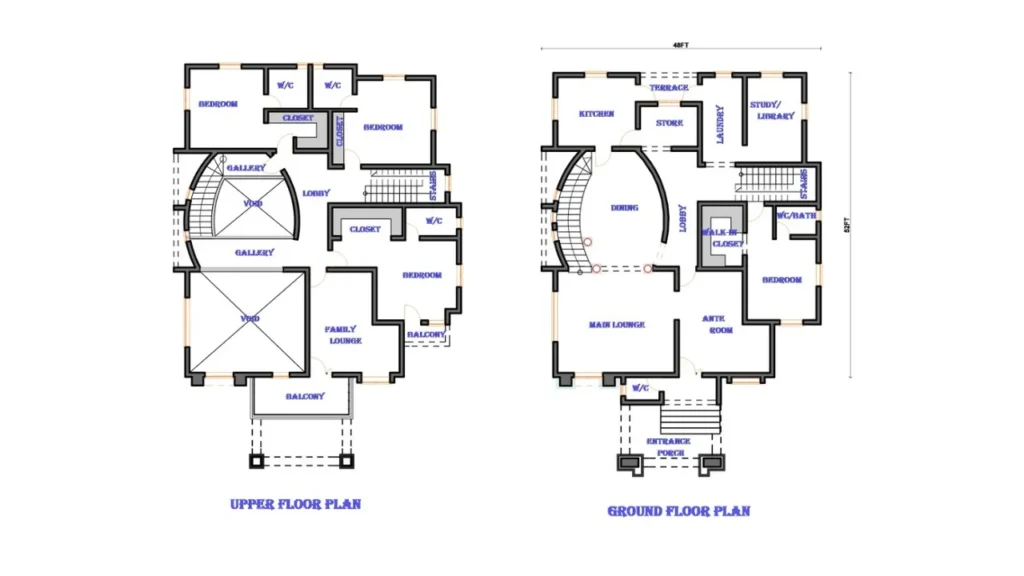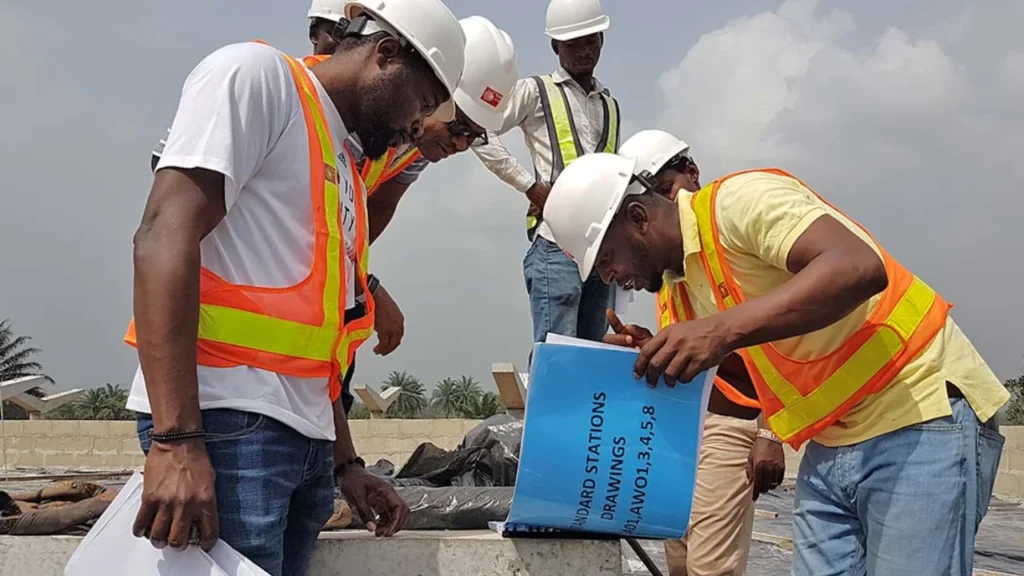So, you have decided to build a house on your own land, this is obviously an exciting journey right?
Table of Contents
ToggleBuilding a house on your own land can also be overwhelming sometimes, these are due to
a number of decisions and tasks that are involved with the process. But you already here,
this article will guide you through each step of the process.
It will also ensure that you have a clear roadmap to follow.
7 steps to follow in other to build a house on your own land.
- Planning and Preparation
- Designing your House
- Financing your House
- Hiring your Team of Building Contractors
- Preparing the Site
- Construction Phase
- Final Steps and Moving In
1. Planning and preparation
The first step to take in other to build your house is adequate planning and preparations, this step
will help you to determine your budget. It will also influence every decision you make
throughout the building process. This plan must include construction costs which involves
building materials, labour and the necessary governmental permits. Architectural design fees
should also be factored in because architects and designers charge fees that are not the same.
Your preparations should also involve utilities and infrastructure. This means that costs for
connecting water, electricity and sewage are properly outlined. You should also prepare for
contingencies and unexpected expenses, this is typically 5-10% of your building budget.
2. Designing your House

After you must have drawn up an action plan, hiring a professional to design your house is the
next important step. This involves looking for a design and build company who understands your
vision and the style and function of the kind of house you need and also has qualified team of architects,
engineers and interior designer who will work together to give you an outstanding result.
Ensure that the company is fully registered and experienced.
You can also ask for projects that they have done and make sure that they are licensed and insure.
It is important to note that your floor plan dictate the flow and functionality of your home.
Hence, your house design should be optimized for the use of space based on your lifestyle.
Also plan for future family needs or aging in place.
3. Financing Your House
This is the part where you draw up a financial plan for the building of your house. Using your
money or savings can reduce the need for other forms of financing such as loans or burrowing.
But for larger projects, you may consider bringing in investors.
Once your building finances is secured, managing the budget effectively is important.
Hence, you should track every expenses by keeping a detailed record of all expenditures.
Also stick to your plans to prevent cost overruns and factor in potential delays and their financial impact.
Lastly, frequently review your budget to properly stay on track.
4. Hiring Your Team of Building Contractors

It is important to note that choosing the right building contractors is very important to the overall
success of your building project. Look for building contractors with experience in similar
projects, check references, and read reviews. If they are offline, do your due diligence by making
enquiries and asking questions. Also ensure that they have the necessary licenses and insurance.
You should also choose your subcontractors. Subcontractors are the ones that will handle
specialized tasks like plumbing and electrical work. Also ensure they are licensed and are
professionals. That is, they know what they are doing. Lastly get a comprehensive quotation of
their charges to avoid surprises.
5. Preparing the Site

This stage involves clearing and grading of the land. Prepare your land by removing trees, rocks,
and other obstacles that will obstruct the building process. Level the land to provide a stable
foundation and implement measures to prevent erosion during construction. Ensure that essential
services are readily available by connecting to municipal services or installing a well and septic system.
A solid foundation is very important for your house’s stability. Confirm soil suitability for your
foundation type. Install footings to support the foundation and also pour the concrete foundation,
by ensuring that it meets the necessary specifications.
6. Construction Phase
Once the foundation of the building is set, construction can begin. Build the skeletal structure of
the house which includes walls and roof and install the roof. Ensure that it is weather-tight. After
that, key systems and insulation are installed next. Run plumbing and electrical lines throughout
the house, install heating, ventilation and air conditioning systems, and insulate walls, floors, and
ceilings to improve energy efficiency.
Then finish the construction with a good interior and exterior designs. Further hang a drywall
and paint walls. Install flooring materials like hardwood, tile or carpet. Finish the exterior with
siding, brick, or stone, and install windows and doors that will properly secure the house.
7. Final Steps and Moving In

Before moving in, make sure you ensure that all work meets local building codes. If possible,
schedule final inspections with local authorities and obtain a certificate of occupancy confirming
the house is safe to live in. Enhance your house’s appeal with landscaping. Plant trees, shrubs,
and grass for green areas. Add walkways, patios, and driveways, and set up a drainage system to
avoid floods. The final step is moving into your new home. Ensure the house is clean and ready
for occupancy. Move in furniture and decorate your new space. Ensure that all utilities are
functioning properly.
Conclusion
Building a house on your land is a significant endeavour that requires careful planning,
coordination and good execution. If the steps outlined in this guide are properly followed, you
can easily walk through the process with confidence and achieve your dream of a custom-built home.
Finally, make sure to stay organized, communicate effectively, and be prepared for
challenges along the way. With perseverance and attention to detail, you’ll definitely enjoy the
rewards of living in a house built on your own land.
What is the first step in building a house on my land?
The first step is to carry out a land study to determine topography and relevant legal limits. This will guide your design and construction process.
Do I need any permits or approvals before starting construction?
Yes, you will need to get building licenses and permissions from your local government or municipal authorities to guarantee that your project meets zoning and building codes.
How do I choose the right design for my house?
Think about your lifestyle, family size, and future demands. Consult with an architect to construct a design that maximizes your land’s potential while remaining within your budget and personal preferences.
What factors affect the cost of building a house?
The cost is determined by the size and details of the design, the materials used, labor charges, and any additional features or finishes you select.
How long does it take to complete the construction of a house?
The schedule varies according to the project’s complexity and scope, but a typical 5-bedroom duplex might take anywhere from 4 to 12 months to complete, including planning and clearances.







